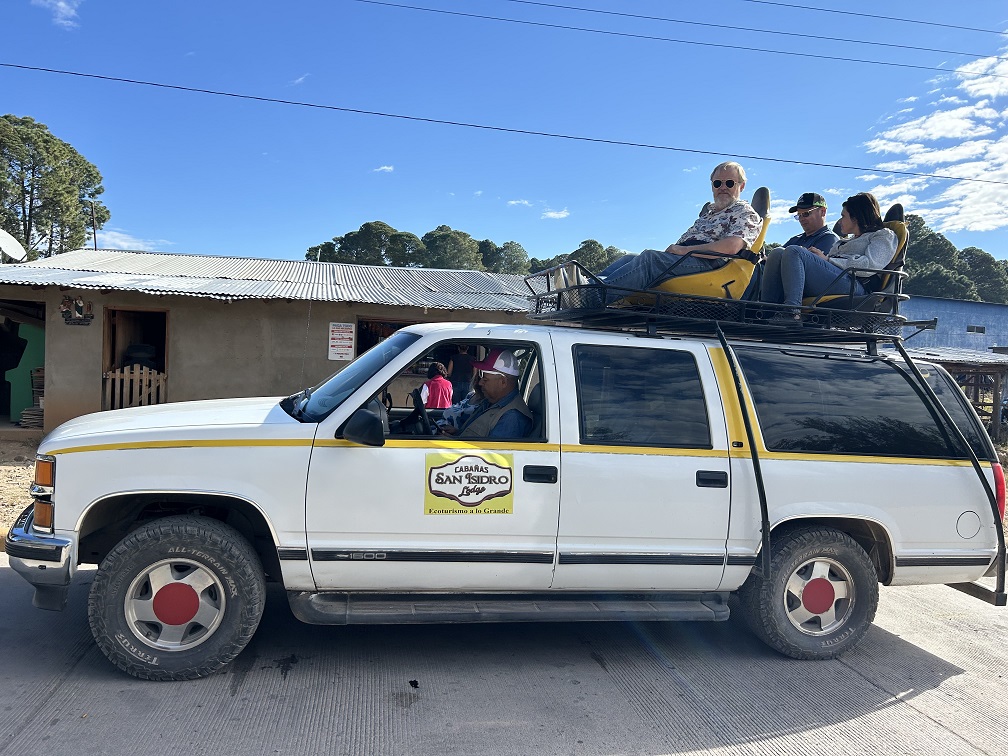
An SUV has a rack on the roof with four seats. Lucia, Esmond and I are sitting in the seats.
In the morning, we took off for a sightseeing drive in a rather unusual mode of transport:

An SUV has a rack on the roof with four seats. Lucia, Esmond and I are sitting in the seats.
Terry opted to ride inside. We stopped along the way to get snacks from a local tienda:
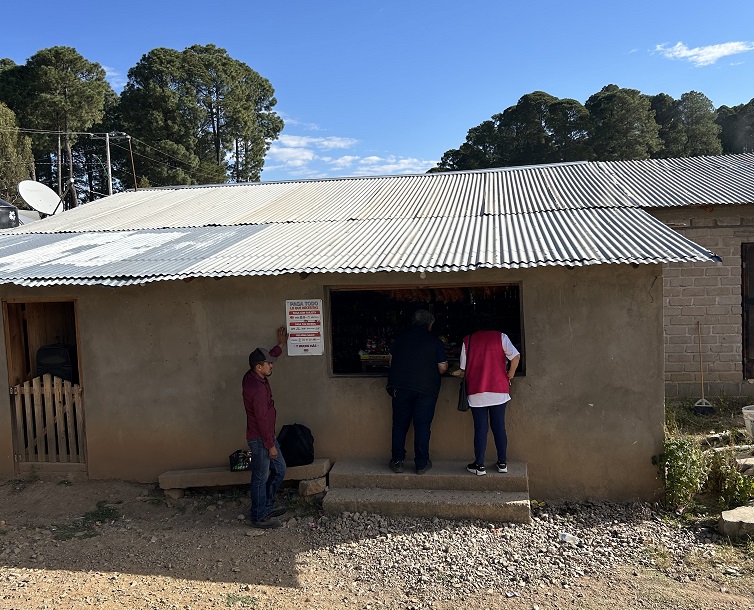
A small adobe building with a tin roof.
...and eventually stopped at a mirador - that is, a lookout point with an impressive view of Gallego Canyon, one of the canyons in the Copper Canyon complex:
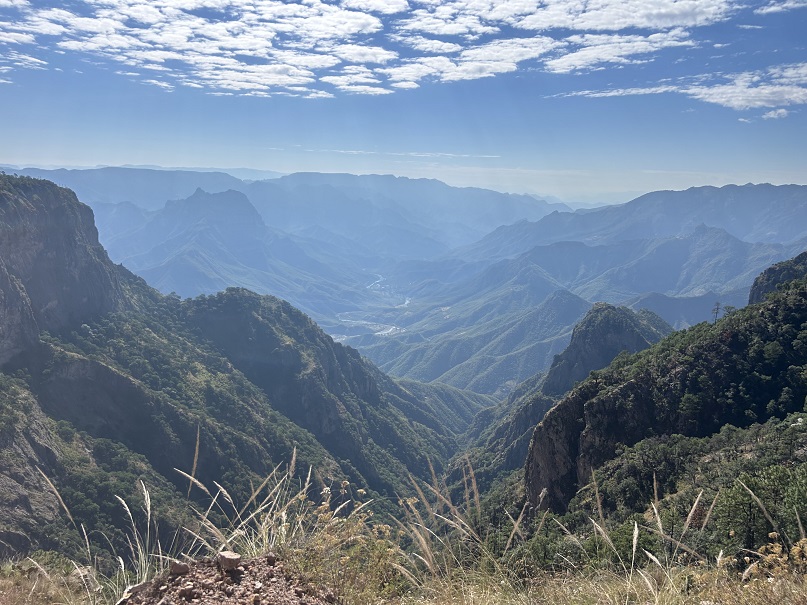
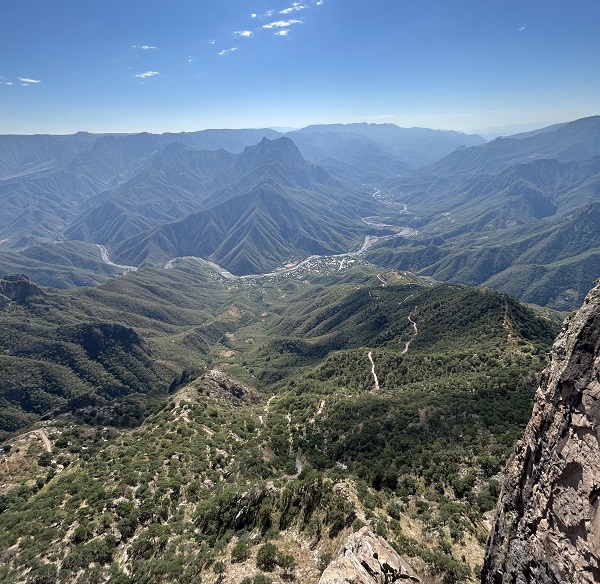
Notice that in the second picture, you can see the town of Urique (oo-REE-kay) at the bottom of the canyon. Now take a look at a map of the area:
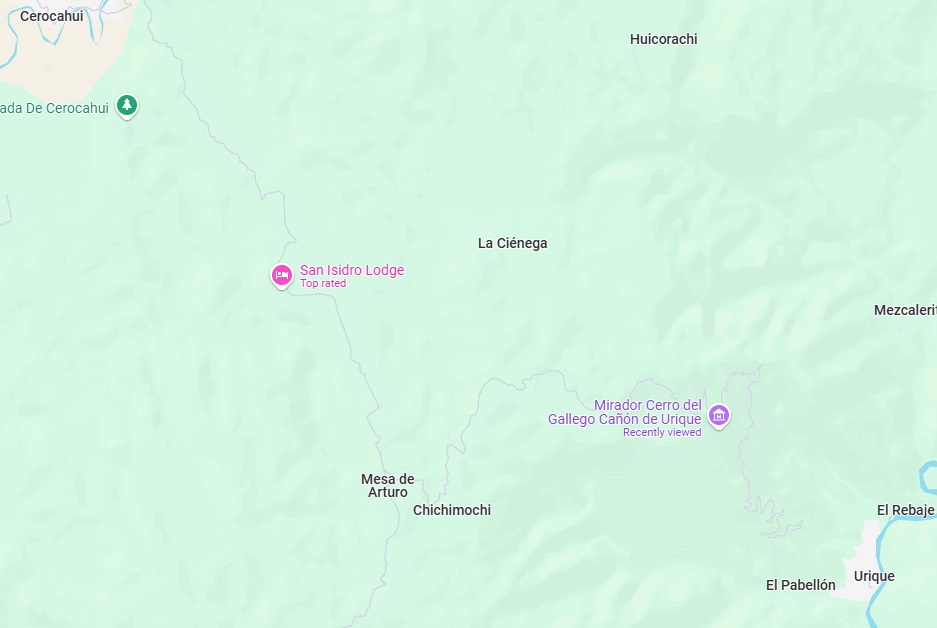
You can see the road from Cerocahui, past the lodge and mirador, and down to Urique. It looks like the road doesn't go all the way to Urique, but it actually does, as you can see on this closeup map:
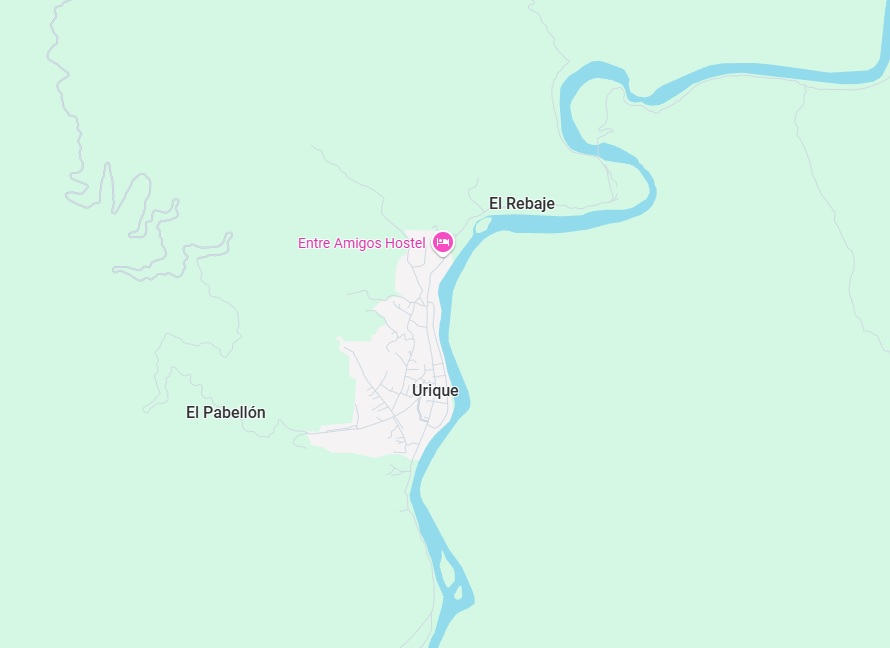
Also notice that there are a few roads leading away from the town. But all of those roads lead to dead ends (trust me, I checked them all). Which means that long and winding road is the only way into or out of Urique!
Just imagine living in a place where the only access to the rest of the world is about 24 miles of twisty dirt road. Talk about isolated. I expressed concern as to how they get food and other supplies, and Juan told me that there's a truck that makes a delivery every day. I'd hate to have the job of driving that truck...
Later that day, after we drove back to the lodge (on the inside of the car, this time), we walked up the road a ways, and then off the road a ways, until we came to an adobe house:
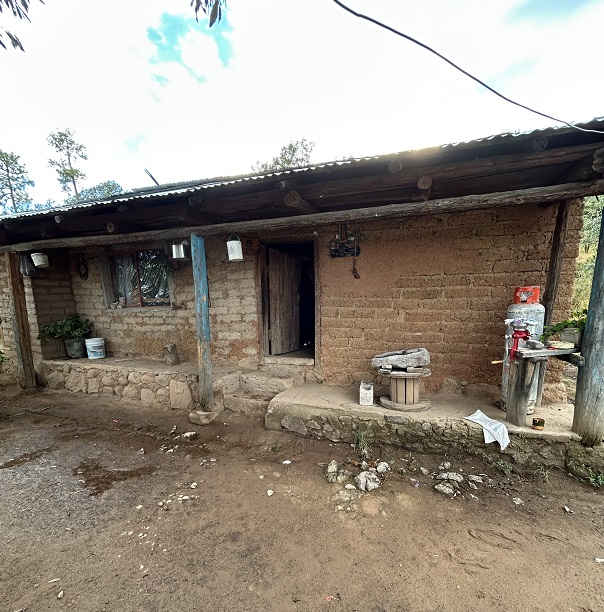
A small adobe and wood frame house, on a stone foundation, with a tin roof.
...which, despite its appearance, had modern conveniences:
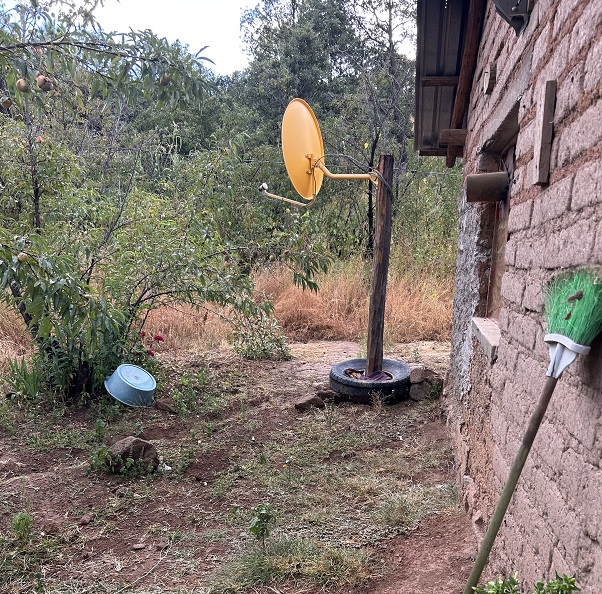
A satellite dish is mounted to a wooden post on the side of the house.
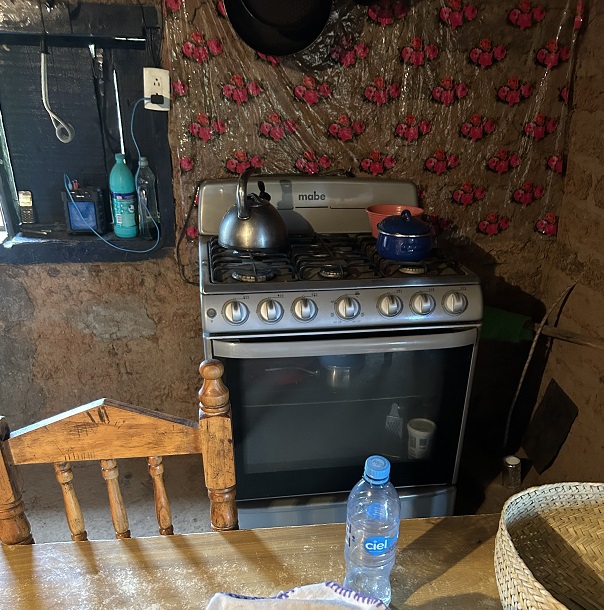
Inside the house, a modern gas oven sits in a corner. There is an electrical outlet on the wall above the stove.
Inside the house, we met Lourdes Perez Cancio, a local Raramuri woman who is a friend of the family that runs the lodge - in fact, her two daughters work there. When we arrived, Lourdes was busy roasting corn kernels on the stove:
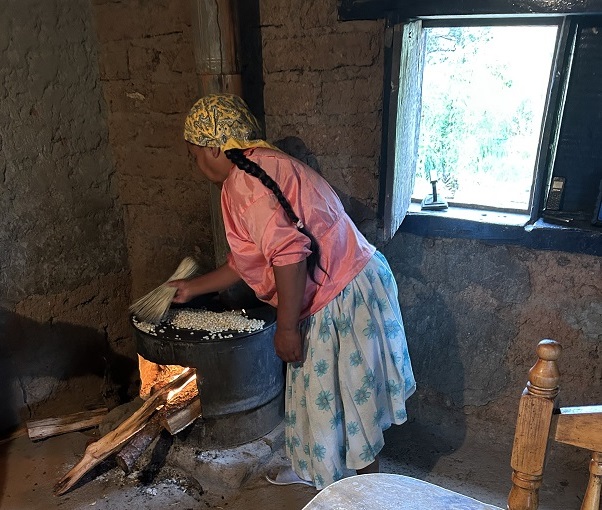
Lourdes, who is dressed in the same type of outfit as the women selling souvenirs to the train passengers, is bending over a wood stove, using a whisk broom made of straw to brush the corn kernels on the top of the stove.
When the corn was roasted, she collected it in baskets:
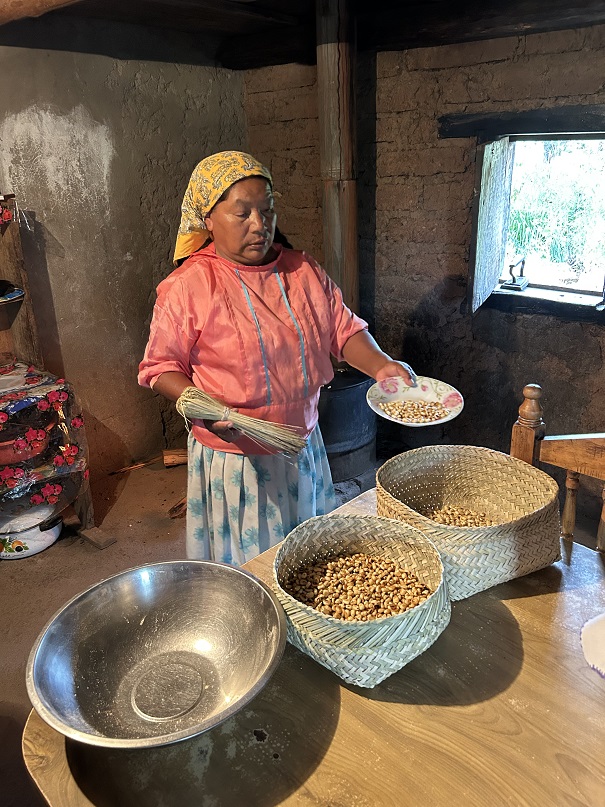
Two large woven baskets sit on a wooden table, both full of roasted corn kernels. There is also a metal bowl on the table, and Lourdes has more kernels in a ceramic bowl in her hand.
...and then took it outside to grind it:
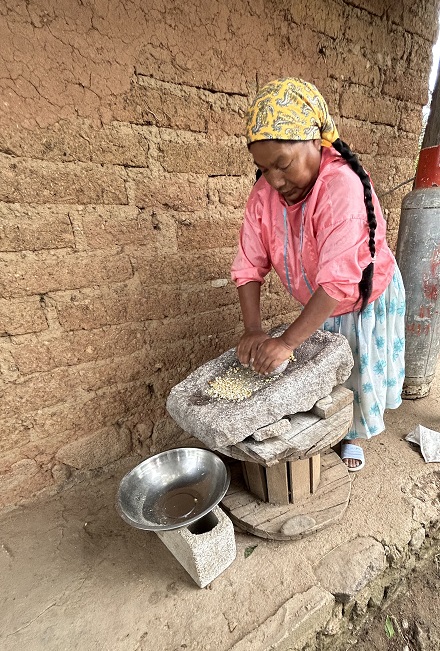
A grinding stone sits on a small wooden table on the front porch, with a metal bowl sitting on a cinder block just below. Lourdes uses a rock to grind the corn on the stone, and the ground corn falls off the end of the stone into the bowl.
Terry and I tried our hand at grinding the corn:
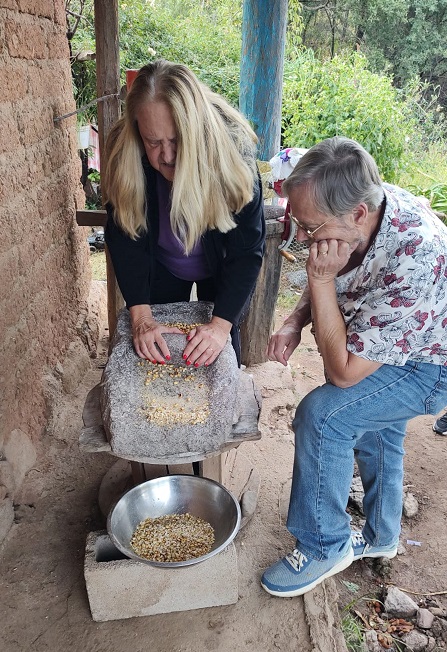
First Terry...
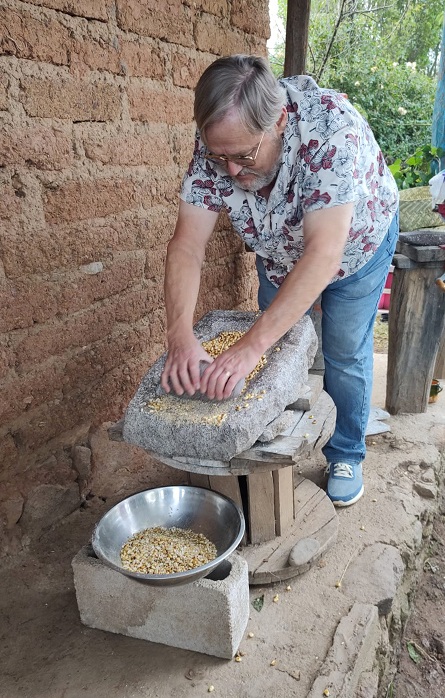
...and then me.
...but didn't do too well. I suppose it takes practice. Esmond also tried his hand at it, and did somewhat better than we did.
Anyway, Lourdes then took the ground corn inside and shook it to separate the larger pieces from the smaller ones:
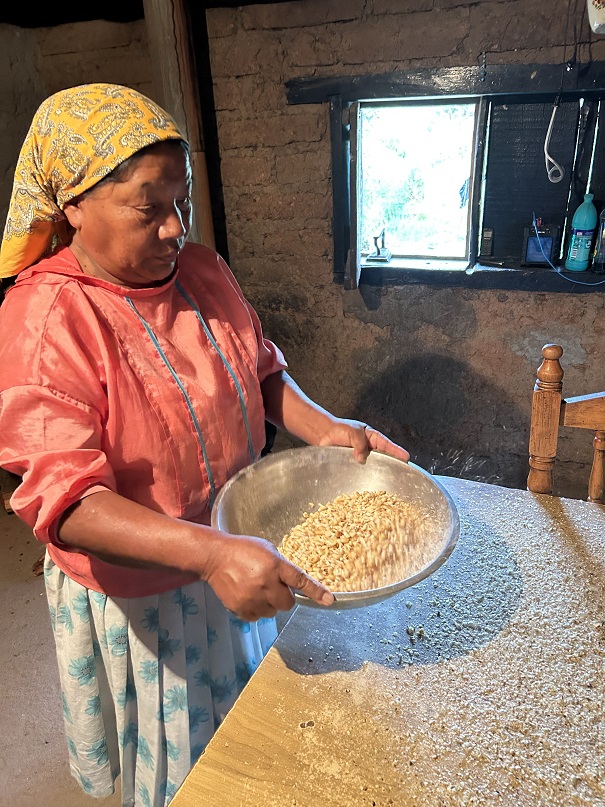
Lourdes holds the metal bowl in her hands and shakes it. The smaller, lighter particles fall out onto the table, and larger, heavier pieces stay in the bowl.
The larger pieces go to feed the chickens:
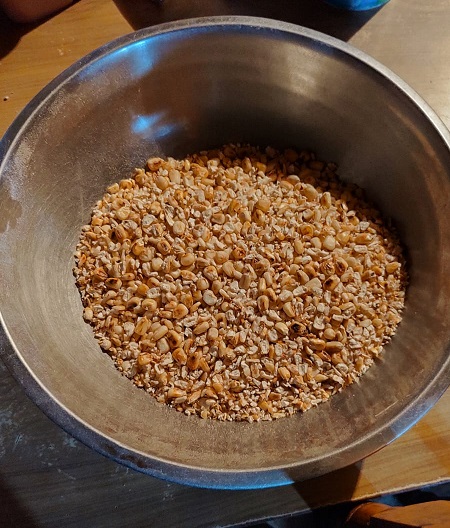
The smaller pieces are now what is called pinole (pee-NO-lay) (w):
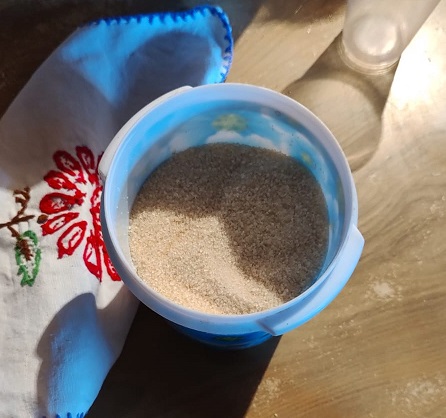
The smaller pieces, now a fine powder, sit in a blue plastic bowl.
...which is a staple food of the Taramahura people. It can be used in a variety of ways, and Lourdes showed us how to make it into a drink called pinolillo (pee-no-LEE-oh). Apparently, it can be mixed with various substances, like vanilla, cocoa, cinnamon, etc. We just mixed it with sugar and water:
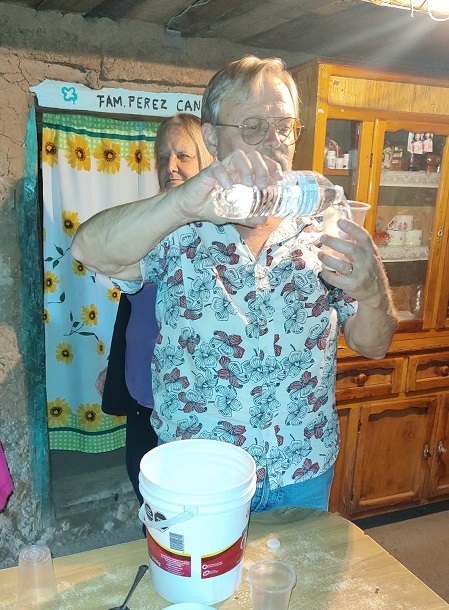
I pour water from a bottle into a glass.
...and drank it. Unfortunately, I didn't really like it very much, although of course I didn't say so.